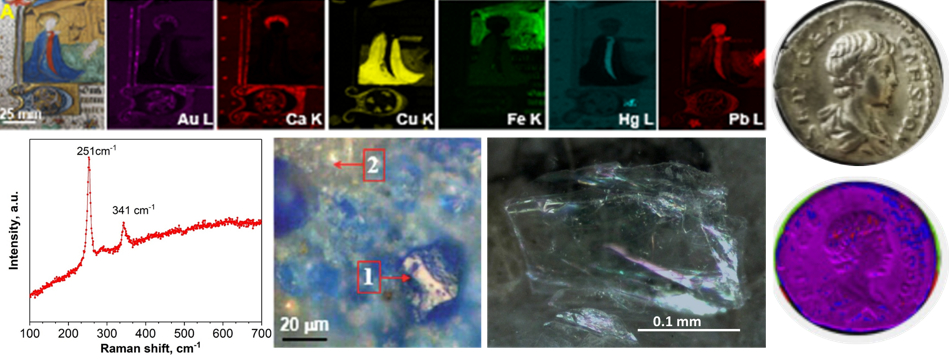Our work centers on investigating the different aspects of creating nanoscale materials for applications ranging from energy storage to nuclear astrophysics. Current research topics include materials for nuclear physics and energy applications. We are also actively investigating historical materials such as ancient alloys, cellulose fibers, and pigments in medieval manuscripts.
Materials for Nuclear Physics
A target used in experimental nuclear physics research is defined as an object that is subjected to bombardment by electrons or ions. Targets can be in solid, liquid, or gaseous states and can be produced with isotopically enriched materials. In low-energy nuclear physics, the most frequently used solid targets are self-supporting films or coatings on a solid backing.

We are developing highly efficient and cost-effective procedures to produce isotopically pure targets ranging from boron to actinides. Among the preparation of solid targets, we use well-established techniques, such as vacuum evaporation, mechanical reshaping, and electroplating.
We have established a new research program to investigate novel approaches for the preparation of actinide targets that are isotopically pure, cost-efficient, reliable, robust, and highly uniform with controlled thicknesses and dimensions. This program uses rapid combustion processes between actinide metal nitrates with different organic compounds for the preparation of thin films as targets for nuclear science measurements.
Materials for Energy
We investigate rapid exothermic (combustion) processes in condensed matter to create novel and useful materials for energy applications. The objective of this research is to establish the links between energy release mechanisms and the structure of nanoscale materials that form during combustion processes. The systems under investigation include solid-state mixtures, thermites reactions, and reactive solutions. We place particular emphasis on the elucidation of effects of different external factors (mechanical and thermal impact, high-energy ion irradiation) on the dynamics of ignition and combustion in these systems. We also complement these investigations by the development of new approaches to investigate the kinetics of rapid exothermic processes. Our efforts are directed towards controlling the combustion processes to prepare nanoscale materials to be used as catalysts, electrochemical energy storage devices, and high-energy-density materials.
Historic Materials
We utilize x-ray emission, vibrational spectroscopy, x-ray diffraction methods, and electron microscopy to investigate the cultural heritage objects and historical artifacts. The current projects involve the development of new techniques for revealing the composition of pigments in medieval European manuscripts, Roman, Spanish and British Colonial coins, and paper money printed in American Colonial and Confederate periods. This project is an extensive collaboration between Nuclear Science Laboratory, Hesburgh Libraries, Department of History, Department of Chemistry and Snite Museum of Arts at Notre Dame.

